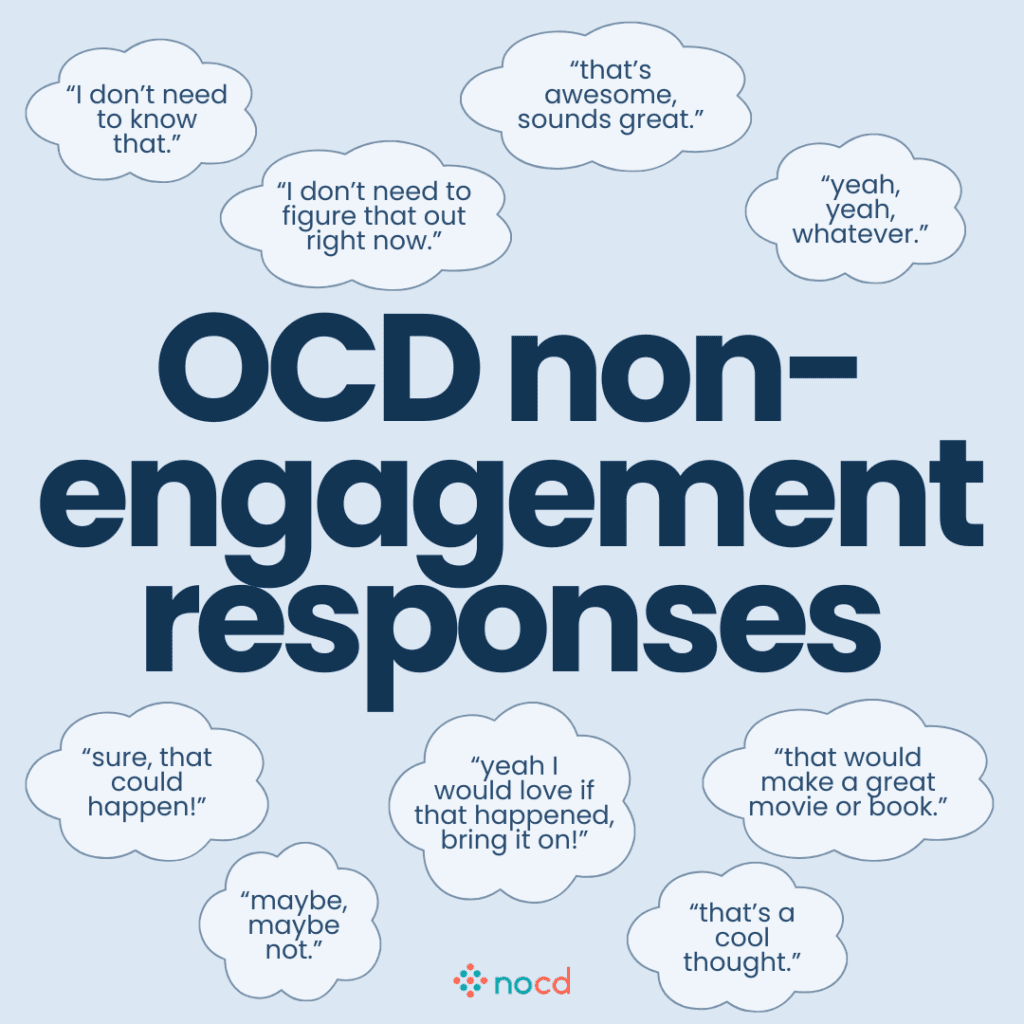Unwanted intrusive thoughts are best managed by noticing them without judgment, resisting the urge to analyze or suppress them, and refocusing your attention on what matters to you. While almost everyone has intrusive thoughts at some point, the way you respond determines whether they fade on their own or spiral into ongoing distress.
This article explains what intrusive thoughts are, why they can feel so overwhelming, the most effective ways to respond, what to avoid, and when it may be helpful to seek extra support.
What are unwanted thoughts?
Unwanted intrusive thoughts are sudden, involuntary thoughts, images, feelings, sensations, or urges that feel disturbing, inappropriate, or completely out of character. Nearly everyone experiences them—studies show that over 90% of people report having intrusive thoughts at some point in their lives.
What sets them apart in daily life is not the content of the thought itself, but how we interpret and respond to it. For some people, these thoughts pass quickly. For others, they can become overwhelming and hard to shake.
Why do intrusive thoughts feel so intense?
Intrusive thoughts can be distressing because the brain mistakenly perceives them as meaningful or threatening. Instead of letting the thought fade, people often try to analyze, suppress, or disprove it. Unfortunately, these attempts make the thought more powerful and recurring.
The cycle can feel like quicksand: the more you struggle with the thought, the deeper you sink into it. Recognizing this cycle is the first step to responding more effectively.
5 effective ways to respond to intrusive thoughts
The most effective way to respond to intrusive thoughts is to notice them without judgment, avoid overanalyzing, and gently redirect your attention.
Here are strategies that can help:
- Label the thought: Remind yourself, “This is just a thought, not a fact.”
- Pause before reacting: Give the thought space instead of rushing to neutralize it.
- Practice acceptance: Allow the thought to exist without engaging with it.
- Refocus attention: Return to an activity, task, or conversation that matters to you.
- Use mindfulness or grounding techniques: Observe the thought like a passing cloud, rather than a signal that requires immediate action.
These approaches help reduce the impact of intrusive thoughts over time, even if they don’t eliminate them.
What not to do when intrusive thoughts appear
The least effective responses are attempts to suppress or control the thought.
Common unhelpful habits include:
- Forcing the thought away: Thought suppression often makes it rebound more strongly.
- Arguing with the thought: Debating or proving it wrong reinforces its importance.
- Seeking constant reassurance: Asking others for validation may bring short-term relief, but it strengthens the cycle in the long run.
- Excessive checking or reviewing: Mentally replaying past events to “make sure” only deepens the distress.
These patterns can lock you into a cycle that makes intrusive thoughts feel even more consuming.
When to seek help
If intrusive thoughts become persistent, cause significant distress, or interfere with your daily life, it may be time to seek professional help. Working with a mental health professional—preferably an OCD specialist—can help you identify the triggers and teach you healthier ways to respond to unwanted thoughts.
How to manage unwanted thoughts
If you have OCD, several evidence-based treatments can help you disengage with unwanted thoughts. The most effective treatment for OCD is exposure and response prevention (ERP) therapy. ERP is a specialized form of cognitive behavioral therapy (CBT) proven to be effective for OCD. General CBT, if not tailored for OCD, can sometimes be unhelpful or even worsen symptoms.
Studies show that ERP therapy is highly effective, with 80% of people with OCD experiencing a significant reduction in their symptoms.
Other approaches that may help include:
- Medication (typically SSRIs)
- Mindfulness-based strategies
- Acceptance and commitment therapy (ACT)
These are typically done in combination with ERP therapy, depending on the individual’s needs.
Severe or treatment-resistant OCD may benefit from the following therapies:
- Intensive outpatient programs (IOPs)
- Partial hospital programs (PHPs)
- Residential treatment centers (RTCs)
- Transcranial magnetic stimulation (TMS)
- Deep brain stimulation (DBS)
- Gamma knife radiosurgery (GKRS)
Find the right OCD therapist for you
All our therapists are licensed and trained in exposure and response prevention therapy (ERP), the gold standard treatment for OCD.
Bottom line
While you can’t stop intrusive thoughts from appearing, you can change how you respond to them. The key is to notice the thought, resist unhelpful reactions such as suppression or reassurance-seeking, and gently redirect your attention to what matters most.
Key takeaways
- Unwanted intrusive thoughts are common, involuntary thoughts or urges that only become problematic when you get stuck responding to them.
- The most effective response is to notice the thought without judgment, avoid engaging with it, and gently redirect your attention.
- Unhelpful responses, such as suppression, arguing, or reassurance-seeking, reinforce the cycle and increase distress.
- Professional support may help if intrusive thoughts are persistent, distressing, or interfere with daily life.

